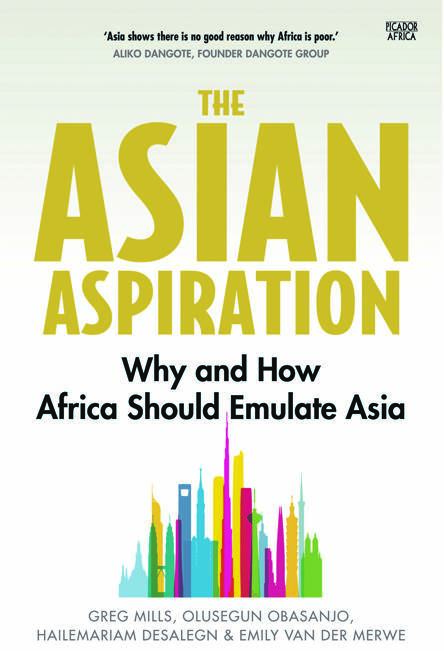
Asia’s leaders certainly didn’t have a road map. It is only with the benefit of hindsight (and the help of growing literature on the subject) that we are able to discern their strategy.
To take Singapore as an example: to an extent, Lee Kuan Yew and his colleagues managed by a healthy combination of curiosity and pragmatism. When asked the secret of his success, Prime Minister Lee admitted that there was no miracle, but that rather, “We did a few things right and well, and continued to do them right and well, widening and deepening them all the time.”
Still, there are many good reasons for Africa to learn from eastern Asia.
The regions, we note, share similar colonial histories. More importantly, through better choices, Asia shows the possibility of focused development within a short time frame, which reached those at the bottom of the socioeconomic pile, thereby alleviating poverty through inclusive growth.
It also illustrates the power of regional exemplars and proximity. Japan moved first, inspiring the region, and debunking the myth of Asian inferiority.
In so doing, the success of one country contributed to the success of the whole region. Across eastern Asia, economic crises were used to good effect, creating the political space to implement necessary, if otherwise unpopular, reforms.
Much of Asia’s success comes down to population density and geographic proximity (internal and external markets), which assisted the flow of goods and movement of investment across the region.
Read: Book Extract: Life through the eyes of a resilient girl
It is essentially the phenomenon economists describe as the multiplier effect.
Yet, the global context has shifted dramatically since most Asian countries started their reform journeys. Climate change and digital technology have closed off some avenues of growth.
At the same time, they have opened up others, easing connectivity, reducing the hurdles to global financial and market integration, and freeing the flow of ideas and skills.
Perhaps most importantly, Africa has an advantage that eastern Asia did not possess in the power of this development example, where its “rules” of development still apply.
Asia’s example does not tell us exactly what each African country should do, but it does give some clues on how to do it. Creating market space – domestically, regionally and internationally – and becoming a friend of business and facilitator of the flow of capital, skills and technology is imperative, as is the need to build a sense of national project.
Playing identity politics or inventing ideological cul-de-sacs and trotting out shibboleths about donors or the dire effects of structural adjustment might be politically convenient but shift the responsibility away from the local setting and the actors that matter.
They also encourage corruption and clientelism.
A positive alternative, Asia shows, is a political-economy of change which gets stuck into the future and not in the past. It has to be driven by pragmatism and a leadership obsessed with execution.
Eastern Asia’s process of diversification, which drove job creation, pivoted the economy away from the elites to the citizenry – what we have termed a commitment to popular welfare.
The institutionalisation of this approach was enabled through the establishment of a meritocracy, through education in the longer term and skills enhancement in the short term, the adoption of a full package of reforms from infrastructure to bureaucratic red tape, and by citizens taking a greater responsibility for their own destiny and holding leaders to account.
This included a willingness to learn from anyone, including foreigners, and the instillation of a culture of continuous improvement.
The selection of low-hanging fruit helps to create momentum, while there were consistent building blocks across Asia, including the development of agriculture and light manufacturing, both of which were immediately pro-poor.
The agriculture revolution was focused principally by improving yields, and that reflected a critical combination of improved market access, finance, technology and techniques. Economic inclusion mattered more than land restitution.
Donors were important in oiling the wheels of Asian success but only because their programmes and the projects they spawned were locally instigated and thus owned.
Investing heavily in infrastructure has enabled countries to move quickly up the value chain and efficiently access markets. Yet eastern Asia’s focus has been on using infrastructure well, whatever its physical extent.
This means matching hardware with human and institutional software, focusing on reducing delays and costs, and squeezing as much out of them as possible.
Devising a financing model, public or private or public-private, remains a challenge across much of Africa, in part because of government autarky, regulatory discretion and policy unpredictability.
Africa today has a comparably greater store of technological innovation than much of eastern Asia possessed at take-off in the 1960s. What Asia did much better than Africa, however, was in providing the market space for entrepreneurs to employ their ideas and inventions.
Eastern Asia also teaches that there is no single “silver bullet” solution, and no easy answers. Asia is not one thing, and neither is Africa.
Often the wrong lessons – of a belief in the value of a benign dictator, for example – are taken by those seeking single-issue answers. Singapore’s path shows that it is as wrong to extol the virtues of colonialism as it is to promote the benefits of authoritarianism.
Lee’s style of governance was also consultative in nature, the prime minister being careful to build public support, making it quite different, despite the caricatures to the contrary, from dictatorial systems.
Legitimacy through delivery – or “performance legitimacy” – was central to the political philosophy of Asia’s first leadership generation.
Overall, while better choices made in the interest of a majority matter, policy has to continuously be reinforced by strong leadership and strong institutions. Development depends on the ability to pull together.
In this, eastern Asia teaches that the sum of reforms is greater than its individual parts.
 | ||||||||||||||||||||||||||
Get in touchCity Press | ||||||||||||||||||||||||||
| ||||||||||||||||||||||||||
| Rise above the clutter | Choose your news | City Press in your inbox | ||||||||||||||||||||||||||
| City Press is an agenda-setting South African news brand that publishes across platforms. Its flagship print edition is distributed on a Sunday. |




 Publications
Publications
 Partners
Partners








